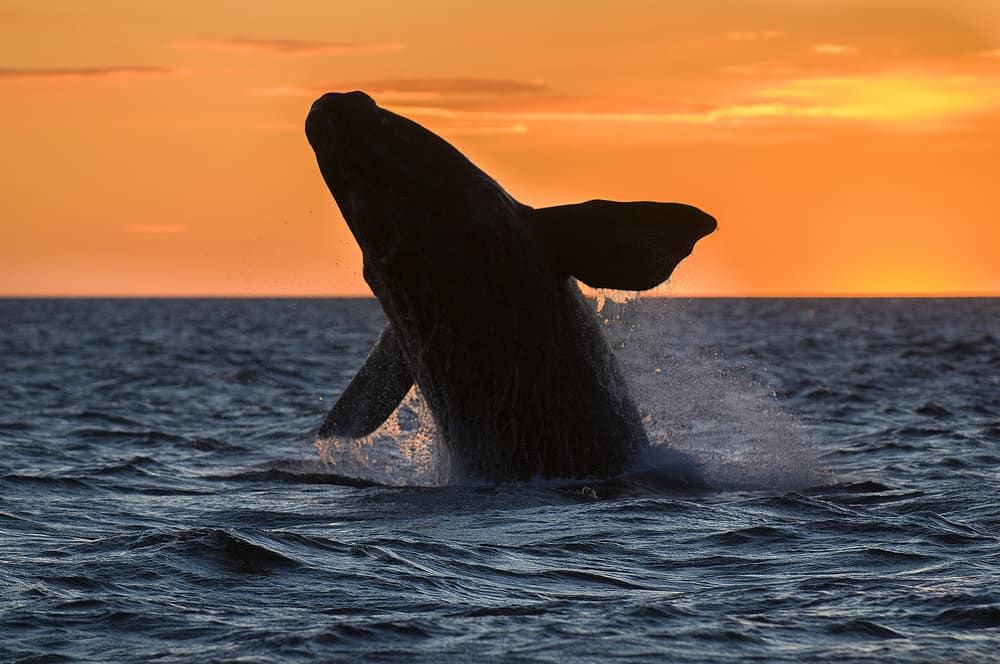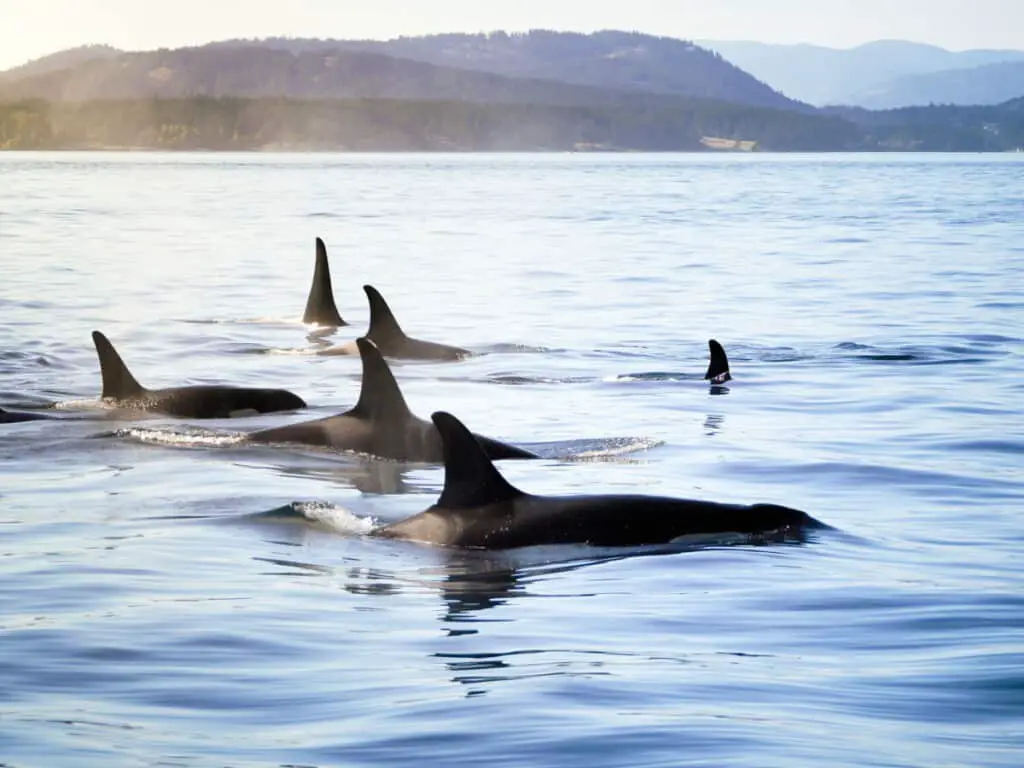Right whales are one of the most fascinating creatures in the ocean. These magnificent mammals are known for their large size and gentle nature, making them a popular attraction for whale watchers and tourists alike. However, despite their peaceful demeanor, right whales face numerous threats in their natural habitat, including predators that pose a significant danger to their survival.
Understanding the natural predators of right whales is essential to protecting these endangered species. With many populations already struggling due to human activity such as climate change and pollution, it is crucial to identify and address any additional threats they may face from other marine animals. In this article, we will explore the common predators of right whales, how they impact the population, and what measures can be taken to protect these incredible animals from harm.

The Majesty of Right Whales
The genus Eubalaena, commonly known as the right whales, are a group of large marine mammals that have been revered for their majestic presence and unique physical characteristics. These whales can grow up to 60 feet in length and weigh over 100 tons. Their massive heads make up one-third of their body weight, and they possess baleen plates that can filter out tiny prey from the water.
Despite their impressive size, right whales are gentle creatures that feed on small crustaceans such as copepods and krill. They migrate long distances between breeding grounds in warmer waters and feeding areas in colder waters, following specific routes along the way. While these migration patterns make them vulnerable to human activities such as shipping, fishing gear entanglement, and noise pollution, they also offer opportunities for researchers to better understand their behavior patterns.
Baleen Whales: Unveiling Their Predators
The Natural Habitat of Right Whales
Endangered North Atlantic right whales inhabit the western North Atlantic, with their primary feeding and breeding grounds located in the Gulf of Maine and the Bay of Fundy. These regions are known for their rich planktonic food sources, which attract large numbers of these gentle giants during the summer months. However, right whales do not remain in these areas throughout the year; they have a complex migration pattern that takes them to other parts of the ocean where conditions are suitable for feeding and breeding.
Migration patterns play a crucial role in a right whale’s survival as it allows them to move to areas where food is abundant. During winter, they migrate southwards towards warmer waters off the coast of Georgia and Florida for calving season. After giving birth, mothers with calves head back north towards feeding grounds while adult males remain behind to continue mating efforts. Feeding behavior also plays an important role in their habitat as they are filter feeders that rely on planktonic organisms such as copepods and krill for sustenance. The presence or absence of these organisms can greatly impact their survival rates. Unfortunately, human activities such as fishing gear entanglement and ship strikes pose significant threats to this species’ natural habitat and migration patterns, making conservation efforts all the more important.
- 1) Rich planktonic food sources
- 2) Complex migration pattern
- 3) Dependence on specific types of planktonic organisms
- 4) Threats posed by human activities
How Big Are Whales: Unveiling the Size of Ocean Giants
The Size and Weight of Right Whales
Measuring up to 18 meters in length and weighing up to 80 tons, North Atlantic right whales are one of the largest mammals on earth. Their sheer size makes them an impressive sight for any observer lucky enough to see them in their natural habitat. However, understanding the size and weight of these majestic creatures is crucial to understanding their biology and conservation efforts.
The table below highlights some interesting facts about the size and weight of North Atlantic right whales compared to other common animals. By comparing their measurements with those of other animals, we can better appreciate just how truly massive these creatures are. Additionally, understanding their size is important for conservation efforts as it can help inform management strategies such as speed limits for ships or buffer zones around whale habitats.
| Animal | Length (m) | Weight (tons) |
|---|---|---|
| Human | 1.7 | N/A |
| Elephant | 3 | 6 |
| Giraffe | 5.5 | N/A |
| Blue Whale | 30 | 173 |
| North Atlantic Right Whale | Up to 18 | Up to 80 |
Measuring the size and weight of North Atlantic right whales is a critical component in understanding their biology and informing conservation efforts for this endangered species. By appreciating just how large they truly are, we can better understand the challenges they face from human activities such as shipping lanes or fishing gear entanglement, which threaten their survival in the wild.
The Threats to Right Whales
Human activities pose significant risks to the survival of this majestic marine mammal, including collisions with ships, entanglement in fishing gear, and habitat degradation. Right whales are known to be slow swimmers and have poor maneuverability, making them vulnerable to being hit by large vessels. In addition, their feeding areas overlap with shipping lanes and fishing grounds, increasing the likelihood of accidental collisions or entanglement in fishing gear. These interactions can cause serious injuries or even death for the whales.
Climate change is also a significant threat to right whales. The changing ocean temperatures and currents are affecting their food sources, causing them to migrate further distances in search of adequate food supply. This increased travel exposes them to more potential threats from human intervention such as ship strikes and entanglement in fishing gear. Additionally, climate change is causing changes in ocean chemistry that may impact the health of these mammals as well as other marine species. As such, it is crucial for us to take action towards mitigating these risks and protecting the future survival of right whales.
Blue Whales’ Predators Unmasked: A Fight for Survival

Killer whales, also known as orcas, are apex predators and are known to occasionally prey on right whales (Eubalaena spp.). Right whales are large baleen whales that are known for their massive size and slow swimming speeds. When hunting right whales, killer whales employ sophisticated strategies to take down their formidable prey.
Killer whales typically hunt in pods, which consist of several individuals working together. They use their intelligence, communication skills, and coordinated tactics to target and attack right whales. One common strategy employed by killer whales is to isolate a vulnerable individual or a small group of right whales, often focusing on young or weakened individuals.
The pod will then work together to harass and exhaust the right whale, using their agility and speed to outmaneuver their larger prey. By swimming in tight circles around the right whale and creating waves, the killer whales can disrupt the right whale’s swimming patterns and disorient it. Eventually, they deliver precise and powerful strikes, targeting vulnerable areas such as the flippers, tail, or head. The combined efforts of the pod can eventually overpower the right whale, leading to its demise.
It is important to note that interactions between killer whales and right whales are relatively rare, as right whales tend to inhabit different regions and migrate in different patterns compared to killer whales. However, when their ranges overlap, killer whales have demonstrated their ability to adapt their hunting strategies to target these massive whales. The predatory interactions between killer whales and right whales highlight the complex dynamics of marine ecosystems and the role of apex predators in shaping these interactions.
The Mighty Blue Whale: How Good Are Its Senses?
The Impact of Predators on the Right Whale Population
Understanding the ecological impact of natural predators on the population dynamics of these majestic marine creatures is crucial for their conservation. The right whale’s main predators include killer whales and great white sharks. However, studies have shown that predation is not a significant factor in the population decline of right whales.
The current decline in the right whale population can be attributed to several factors, including entanglement in fishing gear, ship strikes, and habitat loss due to climate change. While predation may cause occasional mortality among individual right whales, it does not pose a significant threat to the overall survival of the species. Therefore, efforts should focus on addressing other threats that have more substantial impacts on the population dynamics of this endangered species.
| Predator | Behavior | Impact on Right Whale Population |
|---|---|---|
| Killer Whales | Hunt in packs and use sophisticated hunting techniques such as wave washing to separate prey from their pods. | Rarely observed preying upon right whales; only one confirmed case documented in modern times. |
| Great White Sharks | Opportunistic feeders that target weakened or injured individuals; also known to scavenge carcasses. | Not considered a primary predator as they do not actively seek out healthy adult right whales; more likely to prey upon juveniles or calves already dead or dying from other causes such as disease or predation by killer whales. |
While understanding predator behavior is important for managing marine ecosystems and protecting vulnerable species such as the North Atlantic right whale, it is essential to recognize that predation alone is not contributing significantly to its decline. Instead, conservation efforts should prioritize mitigating human-induced threats such as fishing gear entanglements and vessel collisions while also addressing broader issues related to climate change and habitat loss.
Are Sharks Vertebrates? Unraveling the Ocean’s Apex Predators
Protecting Right Whales from Harm
Efforts to conserve the North Atlantic right whale have focused on mitigating anthropogenic threats and addressing broader ecological issues. Conservation efforts seek to minimize accidental entanglement in fishing gear, reduce vessel strikes, and protect critical habitats. Human intervention has been necessary to ensure the survival of this endangered species, with measures such as implementing speed restrictions for vessels in areas where right whales are known to frequent.
Protecting right whales from harm requires a multi-faceted approach that includes monitoring their population size and distribution, identifying and reducing human-made threats, and supporting research into their biology and behavior. This involves collaboration between governments, non-profit organizations, researchers, industry stakeholders, and local communities. Although progress has been made towards conserving the North Atlantic right whale population, continued effort is needed to ensure their long-term survival.
Conclusion
In conclusion, the majestic right whales are an integral part of the marine ecosystem. Their size and weight make them vulnerable to human activities, such as hunting and entanglement in fishing gear. Additionally, they face natural threats from predators such as killer whales and large sharks. The impact of these predators on right whale populations is not fully understood but may be significant.
Efforts must be made to protect right whales from harm by reducing human activities that endanger them and increasing monitoring of their habitat to better understand the role of natural predators. This will require collaboration between government agencies, conservation organizations, and local communities who can work together to ensure the survival of this magnificent species for generations to come. Protecting right whales is not only important for their own sake but also for the health of our oceans and all the life within it.
